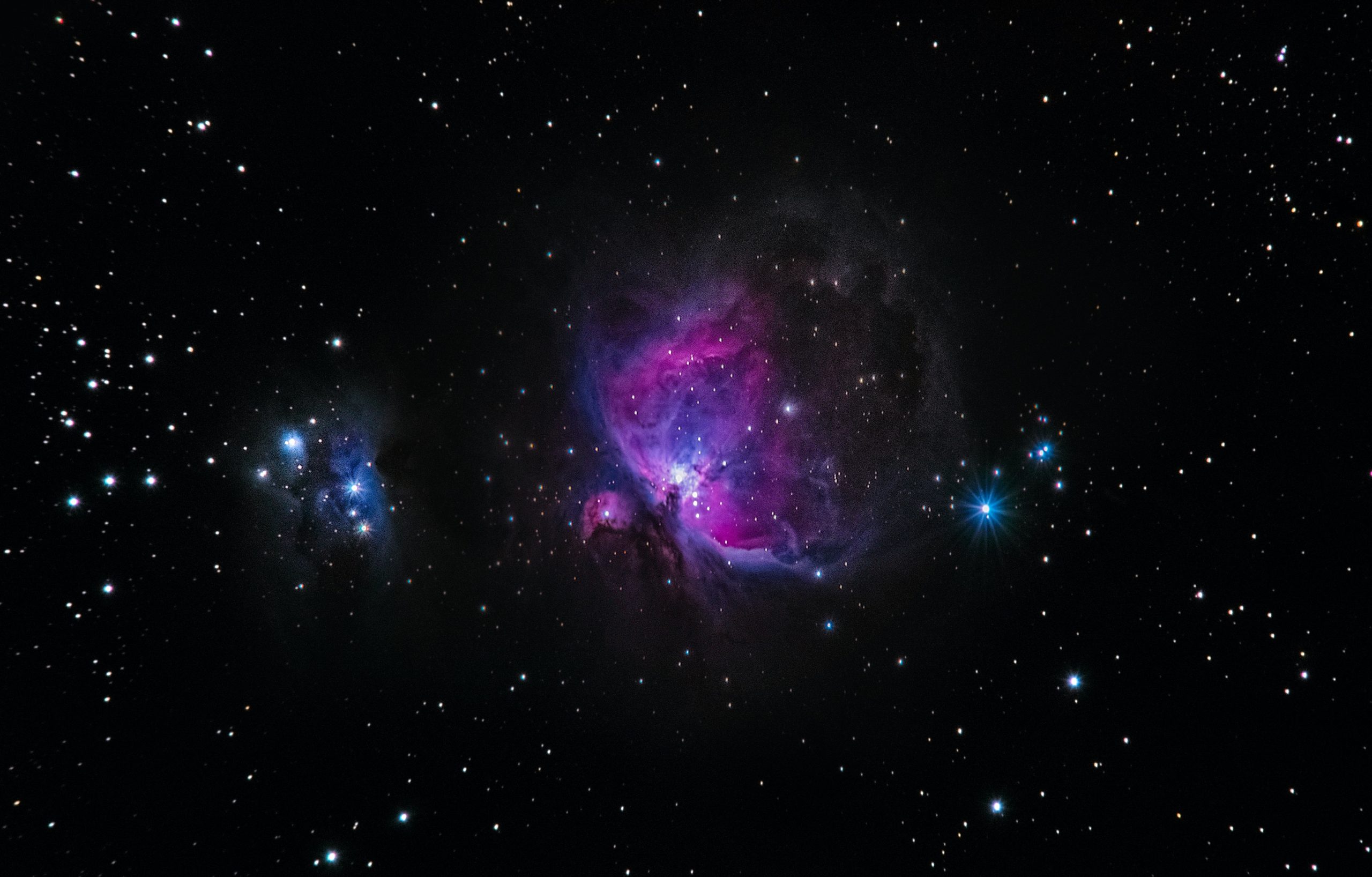What Role Does the Bible Play in Three Kings Day Traditions?

Looking for more amazing products? Check out our online store and explore our collection here! Happy shopping!
Before diving in, please note: This post is for informational purposes only. If you’d like to know more about how we approach topics, feel free to check out our friendly Disclaimer Page.
Hey there, amazing readers! 
We’re committed to delivering quality posts, and your support (even just sticking around despite the ads) means everything to us. So, bear with us, and thanks for helping us keep the good vibes rolling. Now, on to the fun stuff!
TRANSLATE BUTTON AT THE END OF THE ARTICLE
A Quick Overview
Three Kings Day, or Epiphany, is more than a day on the calendar; it’s a celebration steeped in history, spirituality, and joy.
This festivity, commemorated on January 6, marks the visit of the Magi to the baby Jesus, and its traditions are deeply influenced by Biblical teachings.
In this article, we’ll explore how the Bible shapes the customs and practices associated with Three Kings Day, revealing its rich tapestry woven with faith, community, and joy.
Introduction to Three Kings Day Celebrations
Three Kings Day brings together families and communities in a vibrant celebration.
Imagine streets filled with parades, children dressed up as the Magi, and the air infused with the scent of delicious foods.
It’s a time for merriment, laughter, and reflection.
In many cultures, especially in Latin America and parts of Europe, it serves as a reminder of the Holy Family’s significance and the journey of faith.
In Spain, the night before Three Kings Day, families often participate in a grand parade.
The streets come alive with colorful floats and performers, capturing the spirit of the Magi’s journey.
In places like Puerto Rico and Mexico, children eagerly await gifts, believing they’ll receive them from the Three Kings, just as gifts were presented to Baby Jesus.
The celebration also marks the end of the Christmas season, allowing communities to come together and share their faith in a joyous manner.
Children often leave grass or hay under their beds, hoping to please the Kings’ camels.
On the morning of January 6, they awake to find gifts and treats, creating a sense of excitement and wonder.
Families also gather to enjoy a special cake known as "Rosca de Reyes," a sweet bread shaped like a crown, which often has hidden figurines inside.
The person who finds the figurine is usually tasked with hosting a party on Candlemas Day, creating a wonderful cycle of continued celebration.
Historical Significance of Three Kings Day
The historical roots of Three Kings Day can be traced back to the early Christian church.
It honors the visit of the Magi, also known as the Three Wise Men or Kings, who traveled from afar to pay homage to the newborn Jesus.
This event symbolized the recognition of Christ’s divinity by the Gentiles, marking a pivotal moment in Christian history.
The origins of the Magi’s story are found in the Gospel of Matthew.
According to the account, these scholars followed a star that guided them to Bethlehem.
They brought gifts of gold, frankincense, and myrrh, each with its own significance.
Gold represented Jesus’ kingship, frankincense symbolized His divinity, and myrrh foreshadowed His suffering and death.
Over the centuries, various cultures adopted and evolved the traditions associated with this day.
In fact, some believe that the celebration of Three Kings Day began in the 4th century, and by the Middle Ages, it was firmly established in Christian liturgy.
It became a time to reflect on the themes of revelation, light, and the manifestation of Christ to the world.
In addition to its Biblical significance, Three Kings Day serves as a cultural touchstone.
It reminds us of the importance of community and shared beliefs.
Many cultures have incorporated local customs into their celebrations, making this holiday a fusion of faith and tradition that reflects the diversity of the Christian experience.
The Biblical Story Behind the Magi’s Journey
The journey of the Magi is a fascinating tale that holds profound meaning.
According to Matthew 2:1-12, the Magi came from the East, guided by a star that signaled the birth of the King of the Jews.
Their determination to seek out Jesus showcases a quest for truth and enlightenment.
As they traveled, they stopped in Jerusalem to inquire about the newborn King.
This visit to King Herod highlights the political tensions of the time.
Herod, feeling threatened by the prophecy, asked the Magi to report back to him after finding the child.
However, the Magi, warned in a dream, chose to return home by another route, illustrating their faithfulness and obedience to God’s guidance.
The gifts they presented hold deep symbolic meaning.
Gold signifies royalty, recognizing Jesus as King; frankincense, used in worship, acknowledges His divine nature; and myrrh, often associated with burial, foreshadows the suffering He would endure.
This narrative, rich in symbolism, teaches us about humility, reverence, and the importance of recognizing the divine in our lives.
The Magi’s story also reminds us that faith can come from unexpected places.
They were not Jewish but still sought out the Messiah.
This inclusion of Gentiles in the story underscores a core message of Christianity: that Christ came for all people, transcending cultural and ethnic boundaries.
How the Bible Influences Traditions Worldwide
The impact of the Bible on Three Kings Day traditions is profound and far-reaching.
Across different cultures, the celebration embodies the essence of the Magi’s story, infusing festivities with Biblical themes.
In Spain, for example, families gather for a festive meal, sharing stories of the Magi and their gifts.
The tradition of "Rosca de Reyes" reflects Biblical themes, with hidden figurines representing the Magi’s gifts.
In many Latin American countries, the day is marked with parades and reenactments of the Magi’s journey, illustrating how the story has been embraced and reinterpreted over centuries.
In the Caribbean, particularly in Puerto Rico, the celebration takes on a vibrant, community-focused approach.
People participate in street parties, complete with music, dancing, and a sense of togetherness.
The Bible’s influence is evident in the shared prayers and songs that echo the themes of the Magi’s visit.
In some Eastern Orthodox traditions, Three Kings Day coincides with the Feast of the Epiphany, where the baptism of Jesus is also celebrated.
Here, the focus may shift slightly, but the underlying message remains: the manifestation of Christ to the world.
This dual celebration reinforces the connection between the Magi and Jesus’ baptism, highlighting the acknowledgment of His divinity from various angles.
Moreover, many churches conduct services on this day, where passages from the Bible are read, and hymns are sung, reminding attendees of the joyous significance of the Magi’s visit.
It creates a strong sense of community as people come together to reflect on the shared narrative of faith.
Festive Foods Inspired by Biblical Teachings
Food plays a central role in Three Kings Day celebrations, reflecting the Biblical themes of sharing and abundance.
Many traditional dishes draw inspiration from the story of the Magi and the cultural heritage of the regions celebrating.
"Rosca de Reyes," or King’s Cake, is perhaps the most iconic dish associated with this holiday.
Shaped like a crown, it’s often adorned with colorful fruits and sugar.
Families gather to share the cake, and finding the hidden figurine inside carries significant meaning, mirroring the unexpected joys of life and faith.
In other cultures, specific dishes might be prepared based on local customs.
For instance, in some Hispanic countries, families may enjoy tamales or a hearty stew, symbolizing the richness of community and the spirit of sharing.
These meals often come with stories passed down through generations, enhancing the connection to faith.
Beverages also play a role; hot chocolate is commonly served in several cultures, symbolizing warmth, comfort, and togetherness.
Some families might even prepare special drinks that reflect local flavors and traditions, creating a festive atmosphere.
Additionally, the act of preparing and sharing food becomes a ritual.
It’s a time to gather, reflect, and express gratitude for the blessings of the past year.
This sense of community and love echoes the teachings of Jesus, reminding us to find joy in simple gatherings.
The Role of Gift-Giving on Three Kings Day
Gift-giving is a central aspect of Three Kings Day celebrations, deeply rooted in the biblical narrative.
Just as the Magi presented gifts to baby Jesus, families around the world honor this tradition by exchanging presents.
This act of giving is more than just a gesture; it symbolizes love, generosity, and the spirit of sharing.
In many Latin American countries, children eagerly await the arrival of the Kings, believing that they will receive gifts on this special day.
The night before, they prepare for the Kings by leaving grass or hay under their beds for the camels, filled with anticipation.
As families gather on January 6, the excitement is palpable.
Children rush to unwrap their gifts, often finding toys or books that reflect their interests.
Adults also participate, exchanging thoughtful presents that may carry sentimental value.
This practice fosters a sense of community, reminding everyone of the importance of generosity and kindness.
In some cultures, the tradition of gift-giving extends beyond the family unit.
Community events often feature gift exchanges, emphasizing the joy of giving and receiving.
This communal aspect reinforces the connection to the Magi’s story, as they traveled together to offer their gifts.
The importance of gifts goes beyond materialism; it serves as a reminder of God’s ultimate gift to humanity—His Son.
Every wrap and ribbon symbolizes the love and sacrifices made in the spirit of sharing and caring for one another.
Family Gatherings and Biblical Reflections
Family gatherings are the heart of Three Kings Day celebrations.
These moments provide an opportunity to come together, reflect on the Biblical significance of the day, and create lasting memories.
As families share meals, stories, and laughter, the essence of togetherness shines bright.
The day often begins with prayers and readings from the Bible, focusing on the story of the Magi and their gifts.
This reflection fosters a deeper connection to the spiritual roots of the celebration, helping families appreciate the journey of faith.
During these gatherings, traditions may vary.
Some families might share the story of the Magi’s visit, while others engage in discussions about the lessons learned from their journey.
It’s a chance to pass down values and beliefs, ensuring the next generation understands the rich tapestry of faith.
The act of sharing food also symbolizes unity.
When families gather around the table, they celebrate not only their heritage but also the blessings of the past year.
The laughter of children, the warmth of stories, and the mouthwatering aromas create an atmosphere of love and gratitude.
In some households, the day might include games or activities that reflect the themes of the Magi’s journey.
This playful approach keeps the spirit of the celebration alive, reminding everyone that faith and joy go hand in hand.
Ultimately, these gatherings are about connection—connecting with one another and with God.
It’s a chance to pause, reflect, and appreciate the significance of the Magi’s journey in our own lives.
Religious Services that Honor the Magi’s Visit
Religious services on Three Kings Day play an essential role in honoring the Magi’s visit to Jesus.
Many churches hold special liturgies, where the story of the Magi is retold, and hymns celebrating the arrival of the Kings are sung.
These services often begin with a reading from the Gospel of Matthew, focusing on the significance of the Magi’s journey.
This biblical recounting serves as a reminder of the importance of faith, hope, and the pursuit of truth.
In some congregations, families dress their children as the Magi, participating in reenactments that bring the story to life.
This interactive approach engages the community, allowing everyone to connect with the narrative in a tangible way.
The services may also include prayers for guidance in our own journeys of faith.
Congregants reflect on what it means to seek Christ in their lives, drawing parallels between the Magi’s quest and their own spiritual pursuits.
In many cultures, the day concludes with a blessing of the “Rosca de Reyes” or King’s Cake, emphasizing community and togetherness.
The sharing of this cake during the service strengthens the bonds of faith, bringing people closer as they celebrate the joy of the season.
These religious observances not only honor the Magi’s visit but also reinforce the message of Christ’s universal love.
They create a space for reflection, gratitude, and commitment to living out the teachings of the Bible.
Symbols and Decorations Rooted in Scripture
The decorations associated with Three Kings Day are rich in symbolism.
Many of these elements are directly inspired by the Biblical narrative, serving as reminders of the Magi’s journey and the gifts they brought.
Stars are perhaps the most significant symbol of this celebration.
Just as the Magi followed the star to find Jesus, many homes display star-shaped decorations.
This symbolizes guidance, hope, and the light of Christ illuminating the path for all believers.
Crowns are another popular decoration, representing the royal nature of Jesus and the homage paid to Him by the Magi.
These crowns can be seen adorning cakes, homes, and even Christmas trees, tying back to the idea of recognizing Jesus as King.
Additionally, the gifts of the Magi—gold, frankincense, and myrrh—may be symbolically represented in decorations.
Some families create three small gift boxes, each reflecting one of the gifts, reminding everyone of the significance of giving and receiving.
Colors associated with Three Kings Day often include gold, purple, and white.
Gold symbolizes royalty and wealth, purple represents spirituality, and white signifies purity and peace.
These colors can be seen in table settings, clothing, and other decorations, enhancing the festive atmosphere.
Moreover, many families choose to display nativity scenes with the addition of the Magi.
This not only enriches the visual representation of the Christmas story but also reinforces the importance of their visit.
Through these symbols and decorations, families and communities express their faith and understanding of the Bible’s teachings, making the celebration both meaningful and visually enchanting.
Community Celebrations: Sharing the Joy of Faith
Community celebrations are a highlight of Three Kings Day, bringing together people from diverse backgrounds to share in the joy of faith.
These gatherings often feature parades, music, and dance, creating a lively atmosphere filled with energy and excitement.
In many cities, parades are held to honor the Magi, complete with floats adorned with stars, crowns, and other festive decorations.
These parades serve as a public display of faith, allowing communities to come together in celebration.
Participants often dress in costumes representing the Magi, further illustrating the rich narrative of the day.
As they march through the streets, they share stories of faith and joy, inspiring others to join in the celebration.
Food plays a central role in these community events.
Stalls may offer traditional foods and treats associated with Three Kings Day, allowing attendees to indulge in the flavors of the season.
This culinary aspect brings people together, creating a sense of unity and belonging.
Moreover, community services are often held, where attendees gather for prayers and reflections on the significance of the day.
These moments of worship reinforce the spiritual connection shared among participants, reminding everyone of the importance of faith.
Local organizations and churches often collaborate to organize these events, fostering a sense of togetherness.
They encourage participation from all, ensuring that everyone feels welcome and included in the festivities.
Through these community celebrations, the spirit of Three Kings Day comes alive, transforming the day into a shared expression of faith, joy, and connection.
Lessons from the Bible for Modern Celebrations
The lessons learned from the Bible during Three Kings Day celebrations resonate deeply in our modern lives.
The story of the Magi teaches us about the importance of seeking truth, being open to divine guidance, and sharing our blessings with others.
One of the most profound lessons is the value of humility.
The Magi, despite their status, traveled long distances to honor a newborn child.
This act reflects the humility we should embody in our lives—recognizing that true greatness lies not in power but in love and service to others.
Additionally, the gifts presented to Jesus remind us of the joy in giving.
In our contemporary lives, we can draw inspiration from this act of generosity.
Whether it’s through small acts of kindness or larger charitable efforts, expressing love through giving strengthens our communities.
The Magi’s story also emphasizes the importance of perseverance.
Their journey was not without challenges, yet they remained focused on their goal.
This lesson encourages us to stay committed to our own paths, even when faced with obstacles.
Moreover, the inclusion of the Magi illustrates that faith transcends cultural boundaries.
We can draw strength from this message in our diverse society, fostering connections with people from different backgrounds while celebrating our shared humanity.
As we gather to celebrate Three Kings Day, let’s remember these lessons and apply them in our lives.
It’s not just about the festivities; it’s about embodying the spirit of faith, community, and love that the Magi exemplified.
Conclusion: The Bible’s Lasting Impact on Traditions
Three Kings Day is a celebration rich with meaning, history, and joy.
The influence of the Bible is woven into every aspect of this holiday, from the traditions and festivities to the heartfelt gatherings.
As we reflect on the journey of the Magi, we’re reminded of the importance of faith, generosity, and community.
The lessons from this story continue to resonate, urging us to seek truth, share our blessings, and embrace the spirit of unity.
Each tradition, from the sharing of “Rosca de Reyes” to the vibrant parades, embodies a celebration of faith that transcends time.
It’s a reminder that the story of the Magi is not just a tale from the past; it’s a living narrative that inspires our present and shapes our future.
So, as we gather with loved ones, share meals, and exchange gifts, let’s keep the essence of the Magi close to our hearts.
Let’s celebrate not just the holiday, but the values it teaches us—values that can guide us in our daily lives and help us cultivate a world filled with love, hope, and faith.

The Enlightenment Journey is a remarkable collection of writings authored by a distinguished group of experts in the fields of spirituality, new age, and esoteric knowledge.
This anthology features a diverse assembly of well-experienced authors who bring their profound insights and credible perspectives to the forefront.
Each contributor possesses a wealth of knowledge and wisdom, making them authorities in their respective domains.
Together, they offer readers a transformative journey into the realms of spiritual growth, self-discovery, and esoteric enlightenment.
The Enlightenment Journey is a testament to the collective expertise of these luminaries, providing readers with a rich tapestry of ideas and information to illuminate their spiritual path.
Our Diverse Expertise
While our primary focus is on spirituality and esotericism, we are equally passionate about exploring a wide range of other topics and niches 

To ensure we provide the most accurate and valuable insights, we collaborate with trusted experts in their respective domains 
Our blog originally focused on spirituality and metaphysics, but we’ve since expanded to cover a wide range of niches. Don’t worry—we continue to publish a lot of articles on spirituality! Frequently visit our blog to explore our diverse content and stay tuned for more insightful reads.
Hey there, amazing reader! 
Check out our store here and take a peek at some of our featured products below! Thanks for being awesome!











